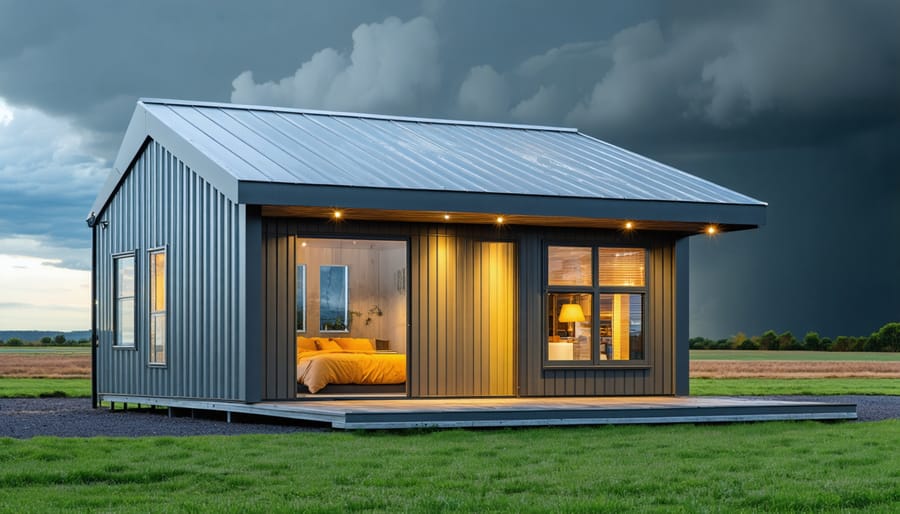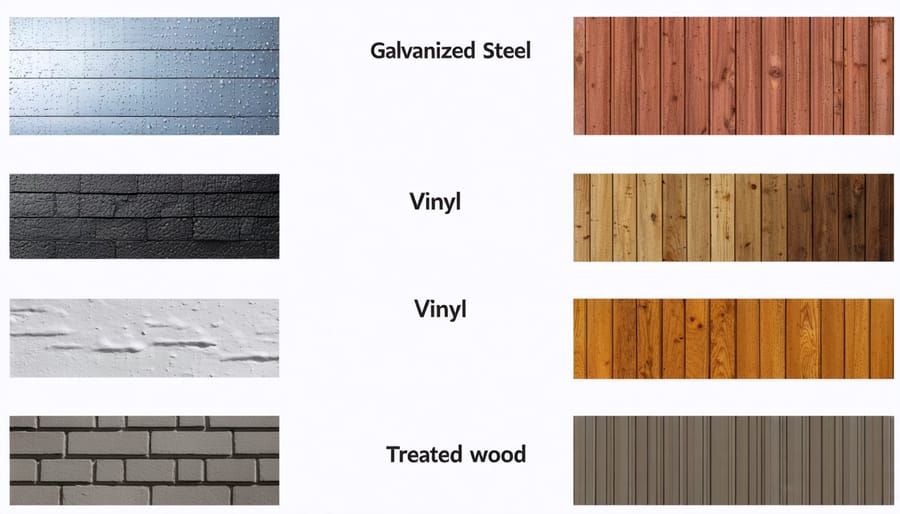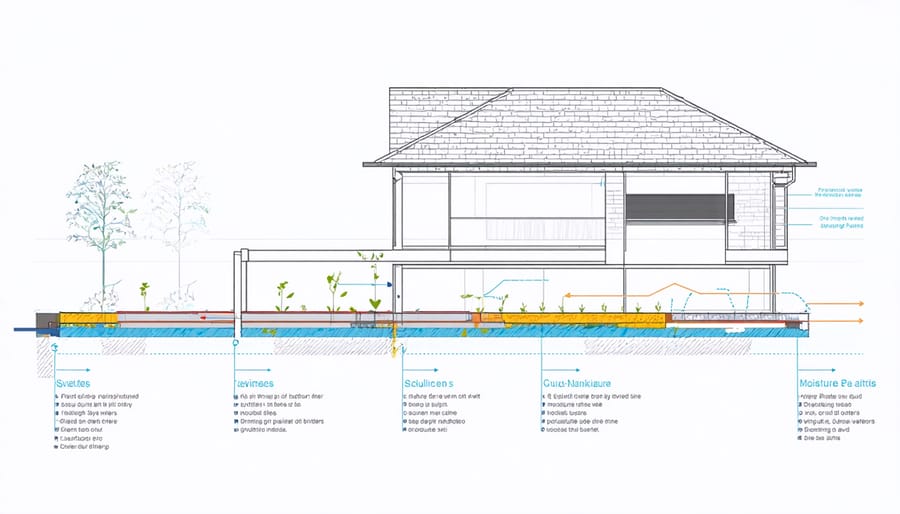Weather-Proof Your Shed: Smart Materials That Stand Up to Climate Change

As extreme weather events intensify worldwide, climate-resilient buildings have moved from architectural novelty to absolute necessity. Modern structures must withstand not just today’s challenges but anticipate tomorrow’s environmental demands. Through innovative design approaches and advanced materials, buildings are now being engineered to adapt to rising temperatures, increased storm severity, and shifting weather patterns while maintaining optimal energy efficiency.
These resilient structures represent the intersection of sustainable architecture and practical engineering, incorporating features like thermal-resistant materials, water management systems, and adaptive ventilation. By combining traditional construction wisdom with cutting-edge technology, architects and builders are creating spaces that protect occupants while minimizing environmental impact. These buildings don’t just survive extreme weather—they thrive through it, maintaining functionality and comfort despite external conditions.
For homeowners and businesses alike, investing in climate-resilient construction means reduced maintenance costs, enhanced property value, and improved occupant safety. As climate patterns continue to evolve, these adaptive building strategies offer a blueprint for creating structures that stand strong against nature’s increasing challenges while providing sustainable, comfortable spaces for generations to come.

Climate-Ready Materials That Last
High-Performance Metal Options
When it comes to building weather-resistant structures, choosing the right metal materials can make all the difference. Galvanized steel leads the pack in durability, featuring a protective zinc coating that prevents rust and corrosion even in harsh conditions. This tried-and-true material is perfect for both structural components and metal roofing solutions, offering exceptional longevity with minimal maintenance.
Aluminum presents another excellent choice, particularly in coastal areas where salt exposure is a concern. Its natural resistance to corrosion and lightweight nature make it ideal for trim work and exterior panels. While slightly more expensive than steel, aluminum’s virtually maintenance-free nature often justifies the initial investment.
For premium applications, consider copper or zinc alloys. Though higher in cost, these metals develop an attractive patina over time while providing superior weather protection. They’re particularly well-suited for architectural details and can last generations with proper installation.
Remember, the key to maximizing any metal’s performance lies in proper installation and appropriate weatherproofing techniques. Using quality fasteners and ensuring proper drainage will help these materials reach their full potential in protecting your structure.
Advanced Polymer Solutions
Modern polymer solutions have revolutionized climate-resilient building materials, offering homeowners superior protection against extreme weather conditions. Advanced vinyl and resin compounds now feature enhanced UV stabilizers and impact modifiers that significantly extend their lifespan compared to traditional materials.
These innovative polymers are engineered to maintain their structural integrity across dramatic temperature swings, from scorching heat to freezing cold. Many products incorporate specialized additives that prevent brittleness and cracking, while others feature microspheres that improve insulation properties without adding significant weight.
What makes these solutions particularly appealing is their low maintenance requirements. Unlike traditional materials that might need regular repainting or sealing, polymer-based products typically only require occasional cleaning to maintain their protective properties. They’re also resistant to moisture, mold, and mildew, making them ideal for humid climates.
Recent developments include color-stable formulations that resist fading and chalking, ensuring your building maintains its aesthetic appeal for years. These materials are also increasingly being manufactured with recycled content, making them an environmentally conscious choice for climate-aware homeowners.
Treated Wood Innovations
Modern treated wood products offer exceptional resilience against harsh weather conditions while maintaining the traditional appeal of natural lumber. Pressure-treated woods now incorporate advanced preservatives that penetrate deep into the grain, providing superior protection against moisture, insects, and decay. These innovations include copper-based treatments that are more environmentally friendly than older formulations, while offering even better durability.
Composite wood materials combine natural wood fibers with recycled plastics, creating boards that resist warping, splitting, and rotting. These hybrids maintain their appearance for decades with minimal maintenance, making them ideal for climate-challenged areas. Some manufacturers now offer treated wood products with built-in water-repellent coatings, eliminating the need for additional waterproofing treatments during installation.
The latest generation of modified woods uses heat and chemical processes to enhance natural lumber’s stability and weather resistance, providing an eco-friendly alternative to traditional pressure-treated options.
Smart Design Features That Protect
Water Management Systems
Effective water management is crucial for maintaining a climate-resilient building’s integrity. A well-designed guttering system directs rainwater away from the foundation, preventing water damage and soil erosion. Install oversized gutters and downspouts to handle heavy rainfall, and consider adding gutter guards to prevent debris buildup and ensure smooth water flow.
Smart drainage solutions include installing French drains around the building’s perimeter and grading the surrounding landscape to slope away from the structure. This combination helps prevent water pooling and potential foundation issues during extreme weather events.
Moisture control inside the building is equally important. Install vapor barriers in walls and under flooring to prevent moisture from seeping in. Proper ventilation systems, including ridge vents and soffit vents, help maintain optimal humidity levels and prevent condensation buildup.
Consider implementing a rainwater harvesting system to collect and store runoff for irrigation or non-potable uses. This not only reduces water bills but also helps manage stormwater during heavy rainfall events.
Regular maintenance of these water management systems is essential. Clean gutters seasonally, inspect drainage paths for blockages, and check vapor barriers and ventilation systems annually. By taking a proactive approach to water management, you’ll significantly enhance your building’s resilience to climate-related challenges while protecting your investment for years to come.

Wind-Resistant Construction
When it comes to protecting your shed against high winds, proper construction techniques are essential. Start with a robust foundation using concrete footings or a reinforced slab that anchors your building securely to the ground. Install hurricane straps or ties to create a continuous load path from the roof to the foundation, ensuring all components work together during strong winds.
Choose a roof design that minimizes wind uplift – hip roofs perform better than gable roofs in high-wind conditions. Install roof sheathing with ring-shank nails at 4-inch spacing along the edges and 6-inch spacing in the field. Double up on roof fasteners and use impact-resistant shingles rated for high winds.
Reinforce door and window openings with extra framing members and use impact-resistant glass or sturdy shutters. Consider installing diagonal bracing in the walls to increase lateral stability. Keep trees and large objects that could become projectiles trimmed and secured around your shed.
Remember to check local building codes, as wind-resistance requirements vary by region. Regular maintenance checks of these wind-resistant features will help ensure your shed stays secure when storms hit.
Temperature Control Solutions
Effective temperature control is crucial for maintaining a comfortable and functional climate-resilient building. Modern insulation materials like spray foam and reflective barriers work together to create a robust thermal envelope, keeping indoor spaces cool during summer and warm in winter. Smart ventilation systems, including programmable roof vents and adjustable window openings, help regulate airflow and prevent heat buildup.
For hot climates, consider installing light-colored or cool roofing materials that reflect sunlight, reducing heat absorption. Shade structures and strategically placed trees can provide natural cooling, while energy-efficient windows with low-E coatings help minimize heat transfer. Heat-resistant exterior paints and coatings add an extra layer of protection against thermal gain.
In colder regions, focus on preventing heat loss through proper sealing and weatherization. Double-pane windows, door sweeps, and comprehensive weather stripping help maintain indoor temperatures. Radiant floor heating systems and properly sized HVAC units ensure consistent comfort while maximizing energy efficiency. Regular maintenance of these systems, including seasonal inspections and filter changes, keeps them operating at peak performance.
Installation Tips for Maximum Durability
Foundation Fundamentals
A robust foundation is crucial for any climate-resilient building, and exploring the best foundation options should be your first step. Start with proper site preparation by ensuring adequate drainage through a slight grade or installing French drains where needed. A well-designed foundation should sit at least 4 inches above ground level to prevent water damage and minimize ground contact.
For areas prone to flooding, consider raised pier foundations or reinforced concrete blocks that elevate your structure while providing superior stability. Incorporate moisture barriers between the foundation and building materials to prevent water infiltration and subsequent structural damage. A layer of crushed stone or gravel beneath the foundation helps with drainage and reduces frost heave in colder climates.
Weather-resistant foundations should also include proper anchoring systems to withstand high winds and severe storms. Use galvanized steel anchor bolts or hurricane ties to secure the building to its foundation, especially in regions experiencing extreme weather events. For added protection, install a perimeter footer drain system to channel water away from the foundation.
Regular inspection and maintenance of foundation elements ensure long-term resilience. Check for signs of settling, cracking, or water damage seasonally, and address any issues promptly to prevent more serious structural problems.

Sealing and Weatherproofing
Proper sealing and weatherproofing are crucial steps in creating a climate-resilient building that can withstand various weather conditions. Start by inspecting all joints, seams, and potential entry points for gaps or cracks. Apply high-quality silicone caulk around windows, doors, and where different materials meet to create a watertight seal.
For comprehensive protection, implement multiple layers of defense. Install weather stripping around doors and windows to prevent drafts and moisture infiltration. Use expanding foam insulation for larger gaps, particularly around utility penetrations. Consider applying specialized waterproofing techniques to vulnerable materials like plywood and wood siding to extend their lifespan.
Don’t forget about proper ventilation while sealing. Install soffit and ridge vents to maintain airflow and prevent moisture buildup in the attic space. Apply water-resistant barriers beneath siding materials, ensuring proper overlap to direct water away from the structure.
Pay special attention to roof-to-wall connections and foundation joints, as these are common weak points. Install proper flashing around chimneys, vents, and other roof penetrations. Consider adding rubber gaskets around fasteners to prevent water intrusion through screw holes.
Regular maintenance and inspection of these sealing measures will help ensure long-term protection against weather-related damage and maintain your building’s climate resilience.
As we’ve explored throughout this guide, investing in a climate-resilient shed is more than just a practical choice – it’s a smart, long-term decision that protects both your storage space and your peace of mind. The combination of carefully selected materials, thoughtful design features, and proper installation techniques creates a structure that stands strong against whatever weather challenges come your way.
Remember that climate resilience isn’t just about surviving extreme weather – it’s about maintaining functionality and value over time. By choosing materials like fiber cement siding, impact-resistant roofing, and proper ventilation systems, you’re creating a structure that requires less maintenance, provides better protection for your belongings, and potentially saves money on repairs and replacements down the road.
The initial investment in climate-resilient features may be higher than standard options, but many homeowners find that the benefits far outweigh the costs. Consider Sarah from Colorado, who installed a climate-resilient shed three years ago: “After watching my neighbor’s traditional shed suffer damage from heavy snow and high winds, I’m so glad I chose stronger materials. My shed hasn’t needed any repairs, and it keeps everything inside perfectly dry.”
Looking ahead, climate-resilient buildings are becoming increasingly important as weather patterns become more unpredictable. By making informed choices now, you’re not just building a shed – you’re creating a lasting storage solution that can handle tomorrow’s challenges. The peace of mind that comes from knowing your stored items are protected, regardless of the weather outside, is invaluable.
Take the time to assess your specific climate challenges, research appropriate materials, and work with qualified professionals when needed. Your future self will thank you for making the extra effort to build a structure that’s ready for whatever Mother Nature has in store.

